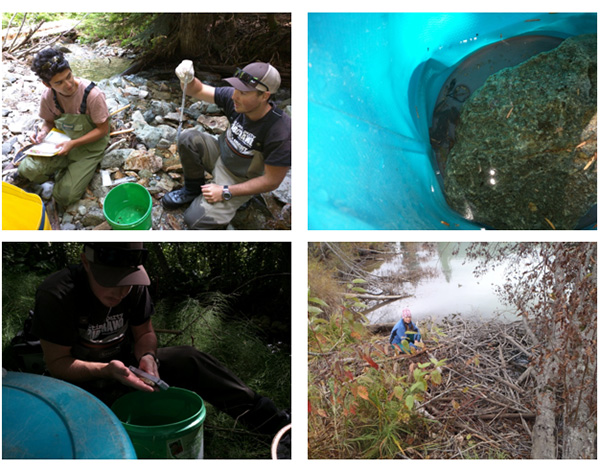Chamber Après at FORLiSE
This winter season Cascade has been participating in the Chamber Après events put on monthly by the Whistler Chamber of Commerce.
This winter season Cascade has been participating in the Chamber Après events put on monthly by the Whistler Chamber of Commerce.
In 2015, Cascade and the Whistler Fisheries Stewardship Group (WFSG) were awarded an Environmental Legacy Fund grant from the Community Foundation of Whistler (CFOW) to support the section of the program related to streams and lakes. Fish, coastal tailed frog and beaver abundance were surveyed and water quality was assessed. Works were carried out by Cascade staff, the WFSG staff and seven volunteers. In addition, the grant allowed the Stewardship Group to purchase and install 5 temperature data loggers. In streams previously monitored with hand held thermometers.

The grant provided by the CFOW allowed the fish stewardship group to expand their monitoring program and improve the quality of the data collected and contributed to the Ecosystem Monitoring Project. Since the project is ongoing, it will contribute to the growing scientific database of environmental information available to the community.
The report provides the third year of data collection of the ongoing ecosystem monitoring project in the RMOW. It is important to continue the monitoring process in order to observe any changes in the ecosystem health. The data collected over time should help the RMOW protect the natural resources in Whistler as well as to help with decision making for future development within the municipality.

The Resort Municipality of Whistler (RMOW) monitors local biodiversity through events like the popular Bio Blitz every year. Recently, the RMOW narrowed its focus to a set of indicators for annual monitoring, allowing the municipality to report on the health of Whistler’s ecosystems and potentially drive future policy decisions. The purpose of the review is to identify and select approximate indicators of biodiversity. Biodiversity indicators, and their accompanying metrics, need to provide appropriate feedback to land mangers and other user groups to be effective. Indicators must be able to show the effect of change and must be clear and discernible They should be repeatable, and be able to address the information needs being sought.
Biodiversity indicators can be divided into species indicators, habitat indicators, or landscape, with links between all three. To use species indicators there must be a sufficient baseline inventory, and the inventory methodology must be repeatable. To use a habitat indicator the link between the applicable species and the habitat unit must be understood, and to use a landscape indicator the relationship between species and habitat patch size and fragmentation should be known. Therefore, sufficient knowledge of the indicators must be gained to be effective. To be useful and cost efficient, indicators should by definition be able to represent trends affecting a larger group of species.
This summer, Cascade staff have selected these indicators and have set and field-tested monitoring protocols with a goal to standardize these protocols for annual assessment. Our hope is that these indicators set the foundation for years of study and monitoring of the health of our natural areas!
